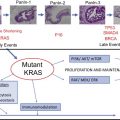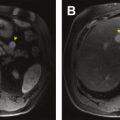
The issue begins with a comprehensive overview of the biology of PDAC by Drs Dunne and Hezel, describing the critical role of mutant KRAS, additional intracellular pathways contributing to malignant progression, the importance of the tumor microenvironment, and the unique metabolic dependencies of PDAC. In the second article, Drs Ponz-Sarvise, Tuveson, and Yu discuss how mouse models of PDAC can be leveraged to expand our understanding of disease biology and facilitate preclinical testing of new therapeutic strategies. The next three articles turn attention to predisposition to PDAC. Drs Stolzenberg-Solomon and Amundadottir discuss genetic predisposition to sporadic PDAC and risk factors for the disease, including cigarette smoking, obesity, diabetes, and chronic pancreatitis. Dr Petersen discusses familial pancreatic cancer, hereditary syndromes with defined germline mutations, and the complexities of translating these discoveries into clinical management of patients. Drs Kim and Fernandez-del Castillo then provide a valuable overview of diagnosis and treatment of cystic neoplasms of the pancreas, lesions increasingly detected incidentally on high-resolution abdominal imaging and with varying risk for malignant transformation.
The subsequent articles in the issue thoroughly discuss current strategies for diagnosis and management of patients with PDAC, finishing with an article on emerging treatment approaches. In article 6, Drs Rosenthal, Lee, and Jajoo provide a beautifully annotated guide to the radiologic and endoscopic assessment of pancreatic tumors, with additional discussion of endoscopic interventions. In the following two articles, Dr Clancy describes technical considerations and new approaches to pancreatic resections, and Dr Wang-Gillam and colleagues discuss perioperative chemotherapy and radiation to improve cure rates in patients with resectable PDAC. Drs Schwarz and Katz then provide an outstanding overview of a still emerging and complex entity, borderline-resectable pancreatic cancer, highlighting the need for multidisciplinary collaboration for optimal management. The care of patients with locally advanced PDAC is then discussed by Drs Pollom, Koong, and Ko, with a thorough consideration of the roles and sequencing of chemotherapy and radiation and an interesting discussion of newer radiation approaches. Drs Rubinson and Wolpin then discuss the diagnosis and management of patients with metastatic PDAC, highlighting recent studies that have defined new standards of care for these patients. The final article of the issue is contributed by Drs Lowery and O’Reilly and provides an exciting overview of therapeutic approaches currently under study, including disruption of key intracellular signaling pathways, modulation of the tumor microenvironment, enhanced immune cell engagement, and exploitation of defective tumor DNA repair mechanisms. Thus, the issue ends as it began, with a focus on the biology of pancreatic cancer and how we can leverage a better mechanistic understanding of the disease to improve the care of our patients.
Although pancreatic cancer continues to challenge scientists, clinicians, and patients alike, a diverse community of talented individuals is dedicated to overcoming this highly lethal disease—at the bench, at the bedside, and with advocacy efforts. With their creativity, commitment, courage, and collaboration, we are certain to see additional progress for patients in the near term. The individuals at risk for and with this disease deserve nothing less.
Stay updated, free articles. Join our Telegram channel

Full access? Get Clinical Tree





